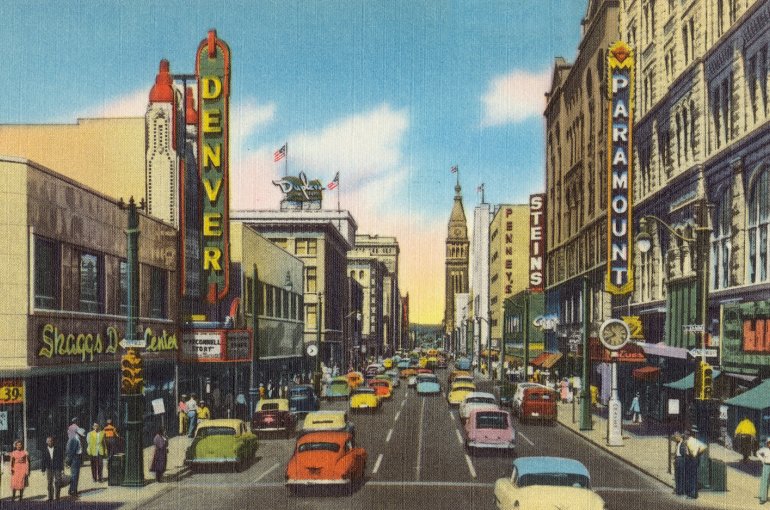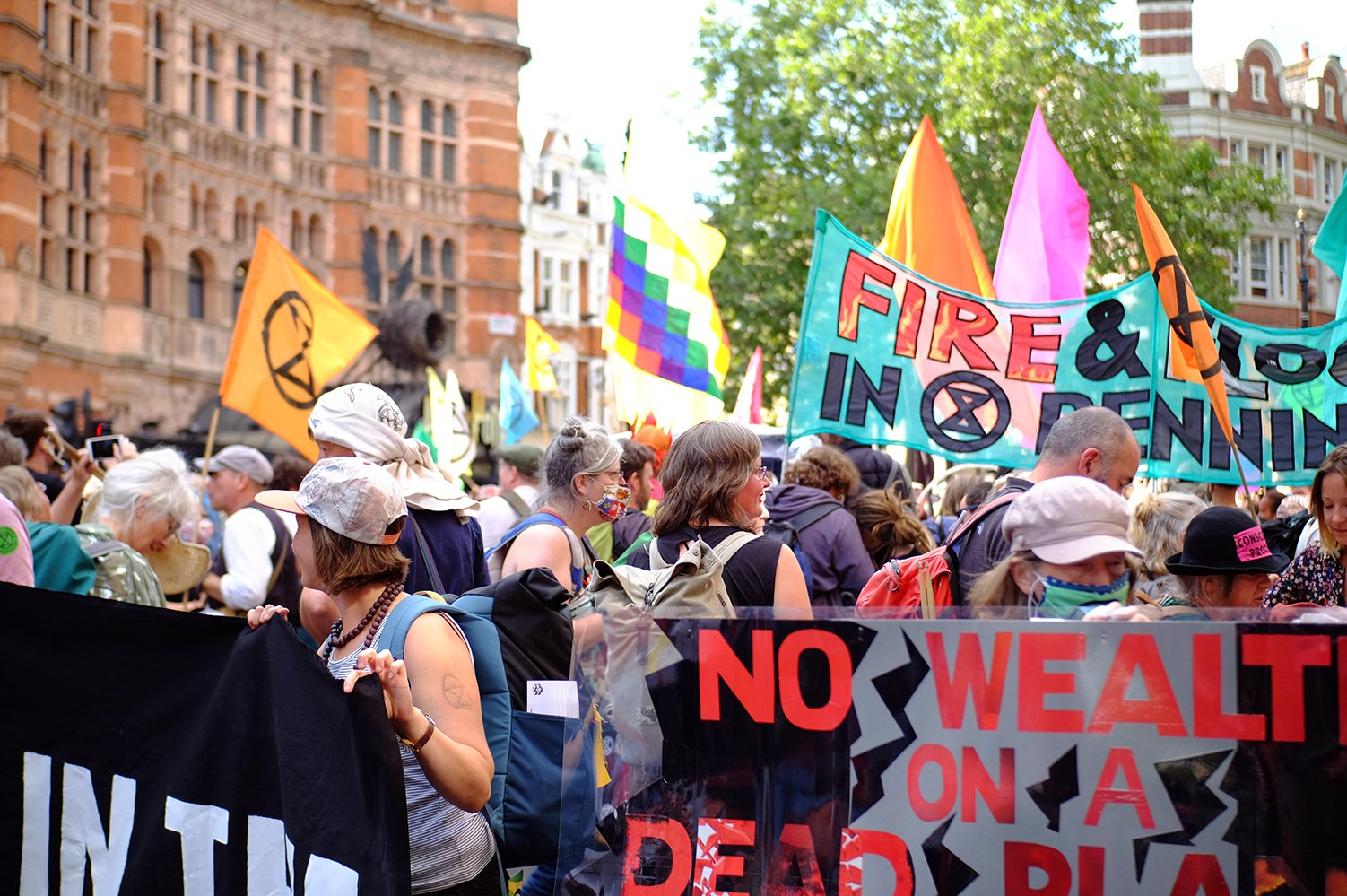Liberation rituals: collective liminality for transformative change
BLOG: Climate Confessions

Today I find myself taking my daughter to nursery in the car again. I don’t feel good about it. But rather than a deep, cutting guilt, I feel a despondent numbness. “I do my bit. No point in suffering while the world churns on as usual”, I reassure myself. When it comes to environmental politics, everywhere we look, there’s a feeling of being stuck. UN summits take one step forwards and two steps back. Scientists are gluing their papers to buildings and their hands to the road because governments are failing to act. Most of us look on dejectedly, wondering what we’re supposed to do, or why we should do it if no one else does.
— by Timothy Stacey
A big part of the problem, I want to suggest, is that many of us – including many of us who actively resist – performatively endorse a vision of the future that looks much like the present, only hotter and with fewer trees. It is what we might call fossil freedom. Its underlying ideal is liberal: we each have our own idea of the good life, which is best formed free of the constraints of time, space, and unsolicited influence from the outside. We can think whatever, sleep with whoever, and go wherever we desire. But sustaining this ideal requires intensive use of resources: we must each have our own house, our own cars and coffee grinders, and good access to trains and planes. From the fossil freedom perspective, taking action on the environment means living a life of self-imposed limits. So indeed: why bother if no one else does?
The fossil freedom hoax
But what if fossil freedom were a kind of hoax? Or otherwise put, what if fossil freedom is not really freedom at all, but rather a package life that has been sold to us like an all-inclusive summer holiday in Spain? A life lived in increasing isolation, with ever greater dependence on the culture industry to keep us entertained; new technologies to keep us comfortable; and, with these, the economic and political status quo. What if there were other visions of freedom and desire that offered us at least as fulfilling ways of living that actively regenerated communities and the planet in the process?
The thing is, many of us have encountered something approaching this alternative life in books or on TV. Some of us have even had a glimpse of it at festivals like Burning Man, when travelling, or even on holiday with family: moments when our private lives become less bounded, in which we flow in and out of one another’s spaces, and collectively source food, entertainment, and energy. And yet when our two weeks are up, still we return to the same old life with the same old rhythms. What’s worse, it may even be that these mini escapes serve to reinforce fossil freedom: they give us brief respite, and allow us to let off steam and recuperate before launching ourselves back into the rat race.
We are crippled by the impression that building an alternative world will be like building a raft while being sucked under by rapids.
The problem, I suggest, is twofold: surrounded by entertainment, advertisements, political intransigence, and widespread disaffection, we become convinced of what politicians so often insist: there is no alternative. And on top of this, we are crippled by the impression that building an alternative world will be like building a raft while being sucked under by rapids. There is no help and no rescue plan. You go it alone or not at all. Cynics smirk at the children of the rich who exit consumer capitalism by buying a patch of land and beginning a farm. Of course, the irony is hard to miss. But if not them, who? And if not that way, how?
Liberation rituals
An alternative future demands an alternative economic system. But the question is, amidst the tides of capitalist globalization and the daily grind we are forced to pursue in its service, how do we even begin to imagine these alternatives? This is where rituals come in.
Van Gennep, [i] the classic theorist of rituals, argued that they unfold in three phases: 1) saying goodbye to one’s old self; 2) a liminal phase in which we are no longer our old self but also not yet a new self; 3) the new person emerges. Randall Collins [ii] stresses that a range of material factors are crucial, such as (1) bodily copresence, (2) mutual focus of attention, (3) barriers to outsiders, and (4) shared mood. I [iii] add that it is equally important that people feel as though they are participating in a shared trajectory from a past that has been inherited and towards future that must be fought for. Getting the staging right is crucial. But people also need to appreciate the story being performed.
Combining these theoretical insights, we can say that rituals allow us to create a symbolic distance between the political status quo and the people yearning for an alternative.
Let me explain this through the story of Steve, an amalgam of a thousand faces I have met in the environmental activism circuit. Steve is a shy computer programmer in his mid-thirties. He first gets involved in one of his local activist groups after he sees a post on Facebook, which suggests that we need to end capitalism to save the climate, and which appears to offer a very real, if hazy, alternative. Then, at his first meeting, without preparation, Steve is asked to join a circle and talk about his greatest fears. He looks around the circle and sees all kinds of people: from well-dressed academic types to dreadlocked hippies. Palms sweating with nerves as his turn to speak approaches, Steve wonders if he will be able to get the words out. But then, as he opens his mouth, something quite profound happens. He sees people’s kind eyes. He feels their empathy and their warmth. His tongue loosens and he talks fluently. His nerves, and with them his old, isolated, anxious self, seem to evaporate. As each next person makes themselves vulnerable, a shared emotional energy begins to build in the room. They are letting go of who they were, with one another as their witnesses. They begin to feel that they are part of a group, even if it isn’t clear where that group is headed.
It is in this liminal space, symbolically distant from the political status quo, surrounded by others who appear to share their ideals, that people gain a new capacity to imagine alternatives. Not only have they partially rid themselves of the weight of the world as it is, and the daily concerns and inadequacies that come with it; not only does others’ generosity give them the confidence to think creatively; but being there together also gives them the sense that they are part of something bigger. A new, more robust sense of freedom emerges, in which people are listened to and respected. Together, they feel, they can carve out a different world.
rituals allow us to create a symbolic distance between the political status quo and the people yearning for an alternative.
From fossil freedom to faithful freedom (and back)
I want to call this feeling faithful freedom: a freedom rooted in a mutually complementary faith in oneself, one’s community, and the possibility of a better future. Faithful freedom is what I see among the people transforming themselves and their communities to live in greater harmony with the more-than-human world. People engaged, for example, in the Transition Network, in Community Supported Agriculture, or in ecovillages. From the fossil freedom perspective, they are living an almost incomprehensible life of less. They are constantly cutting out simple pleasures, from red meat to coffee. They travel only by bike and public transport, and accordingly have to turn down certain invitations and say goodbye to exotic holidays. And they live in close quarters with neighbours and have to negotiate who is responsible for what, and what is permissible. But from a faithful freedom perspective, they are living a life of abundance: they are involved in the planting and harvesting of their own food, unburdened by questions of where it came from and who – or what – suffered in the process. They experience a deep sense of wonder when they encounter everyday animals and plants. And most importantly, they are embedded in strong, intergenerational communities, who inspire them with the faith that another world is possible.
I have spent many years engaging in such projects. But since having a daughter, I have found that my time and energy has dwindled. Slowly, I am drifting from the liminal space, and reproducing the rhythms of parenthood that an advanced capitalist society has laid before me. I have to work every hour I can find: to get a mortgage: to secure a future for my family. My daughter must go to childcare. The car saves me just a little bit of precious time. It all makes so much sense. When you’ve little faith.
[i] Arnold Van Gennep, The Rites of Passage, (Chicago: University of Chicago Press, 1961).
[ii] Randall Collins, Interaction Ritual Chains (Princeton, N.J.: Princeton University Press, 2005). P.39
[iii] Timothy Stacey, Saving Liberalism From Itself: The Spirit of Political Participation (Bristol: Bristol University Press, 2022). Pp.132-5
Climate Confessions is a monthly blog series in which Timothy Stacey reveals the “religious repertoires” associated with sustainability in various sectors. From the myths of great floods that dominate in Dutch politics to the rituals of reconnecting with other humans and the other-than-human found among activists, each month, Tim invites you into the repertoires that lurk beneath the surface, shaping sustainability in an otherwise secular world. For more formal reflections, see Tim’s peer-reviewed research: www.uu.nl/staff/TJStacey/Publications. To discuss how repertoires might transform your practice, get in touch t.j.stacey@uu.nl


